ASHEVILLE — The scene resembles any college classroom: Students trickle in and find a seat as the professor prepares for today’s discussion. Some students shrug off their sweaters and quietly flip through their notebooks; others chat about coursework, evening plans or the chilly temperatures outside.
At first glance, this could be any creative writing class at any university in America. But look again and a peculiarity comes into focus: Half the students wear identical sea-green cotton shirts and jeans issued by the N.C. Department of Corrections. Those in green uniforms are inmates at the Swannanoa Correctional Center for Women, but for the next hour and a half, they’re also Warren Wilson College students. In class, they learn alongside undergraduate classmates from outside the fences.
The unusual tableau was orchestrated by the innovative Inside-Out program between Warren Wilson College and the NCDOC, the first of its kind in the state. Using a structure based on the Philadelphia-based Inside-Out Prison Exchange Program, the college is offering accredited classes to WWC undergrads and incarcerated women at the prison for the first time in North Carolina.
While the program is still in its fledgling stages, students, faculty and administrators say the classes have already had a major impact. For some, they offer an outlet for personal healing; for others, it’s a path to a career after release. For inmate and undergrad alike, Inside-Out provides the chance to gain self-knowledge, grapple with the systemic issues of the penal system and learn from one another.
Breaking in
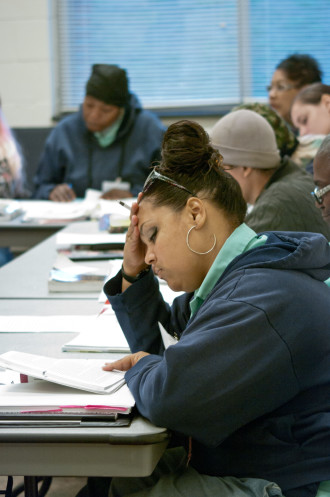
While this fall’s semester marks the first time Warren Wilson has offered classes at SCCW for credit, the roots of the program go back several years, according to one of the program’s founders, WWC professor Rima Vesely-Flad.
“I’ve always wanted to provide educational access to people who lack it in direct ways,” says Vesely-Flad, who based her doctoral studies on her work with inmates at New York’s Sing Sing prison. “I always thought I would go back and teach in the prison.”
Vesely-Flad teamed up with faculty member Julie Wilson and Brooke Millsaps, the school’s associate dean for community engagement, to pitch a joint program to prison administrators in 2015. “[Rima] asked for colleagues to explore starting a program here,” says Wilson, the director of the college’s Writing Center, which offers academic support for students in the program. “The three of us began meeting with staff at the SCCW, who were very welcoming to us and interested in partnering to offer college classes at the prison.”
Warren Wilson’s proposal was modeled after the national Inside-Out program developed by instructor Lori Pompa at Philadelphia’s Temple University in 1997. “In 1995, at a prison about three hours outside Philadelphia, [students and I] met with a group of guys and had this amazing conversation,” Pompa recalls. “As we were leaving the room, one of the men incarcerated there asked if we’d ever thought about doing this over a whole semester. I promised him I would think about it, and think about it I did.”
Since then, Inside-Out has held 51 training sessions on how to implement the program for more than 800 people throughout the world. “This thing has just taken off,” Pompa says. “It’s expanding all over the place, and I love that schools are building programs themselves and getting more than just one instructor there.”
The Swannanoa Correctional Center for Women already offers a host of educational and vocational opportunities for inmates, says Rob Phillips, who supervises the facility’s programs. Partnerships with A-B Tech and correspondence courses through UNC Chapel Hill offer chances to earn college credit, but the Inside-Out program is the first initiative that allows incarcerated students to participate in classes with those on the outside.
“In working with traditional students in the facility setting, the offender participants can begin to feel more at ease with the idea of returning to college as ‘regular’ students, thus alleviating some of the stigma and apprehension associated with incarceration,” says Phillips.
Administrators with both institutions spent the better part of the past two years sorting out the nuts and bolts of the program, including questions of class size, who could enroll, whether male-identified students from WWC would be allowed to participate, and how to pay for it all, says Vesely-Flad.
“This was not an overnight process,” agrees Phillips. “[It took] several years to realize, and has required the cooperation and support of the Laughing Gull Foundation, Warren Wilson staff and the N.C. Department of Public Safety.”
Limited opportunity
College education programs in penitentiaries aren’t a new concept. At the beginning of the 1990s, about 350 programs offered in-prison college curricula across the country, according to a Sept. 8, 2016, report by American Public Media. In 2013, a Rand Corp. report noted that recidivism rates for former inmates who had access to education while incarcerated dropped 13-16 percent compared to those who didn’t participate in educational programs.
“It is a proven fact that our biggest hedge to offender recidivism is education and that the educational programs that we offer our population may well act as that springboard toward a better life and positive re-entry,” says Phillips. “It is far less expensive to educate a person and have them become a positive member of society than it is to keep them incarcerated.”
In that sense, the Inside-Out model offers several advantages, says Pompa. “It is dialogue focused,” she notes. “When you have to grapple with something in a group, and you’re talking about it, and really wrestling with ideas, it’s so much different than watching somebody put up a PowerPoint and talk their way through it.”
With few financial resources available behind bars, many prisoners relied on federal Pell Grants and other subsidies to afford classes and materials. But the 1994 Violent Crime Control and Law Enforcement Act rescinded access to Pell Grants for incarcerated people, leading many programs to close.
“There was active lobbying, especially on the part of correctional officer unions, who said, ‘We can’t afford to send our kids to school, why are prisoners getting a free education?’” says Vesely-Flad. “A lot of the prison guards don’t have college degrees, or even college classes. There are some power dynamics they were fighting against.”
According to AMP’s September 2016 report, by 2005, just 12 college prison programs remained in the United States. “It had a tremendous effect,” Vesely-Flad says of the decision to cut funding. “The only [programs] that continued to be available were privately funded, foundation-funded or donor-funded.”
While the Obama administration reinstituted a pilot Pell Grant program for prisoners in 2016, the funds are not available to any offender with drug-related charges on their record, which excludes a huge number of inmates who would otherwise qualify.
Warren Wilson’s Inside-Out program relies primarily on financial support from the Laughing Gull Foundation, a nonprofit organization that supports progressive initiatives across the South.
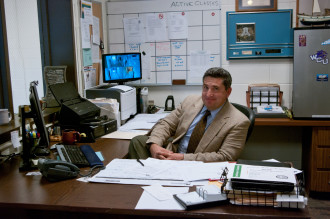
“They have a women-in-prison and higher-education track and they have an LGBTQ track,” Vesely-Flad says. “They gave us a three-year grant, and that’s how we’re able to afford the classes because there are substantial costs involved.”
The right stuff
This semester, Warren Wilson offered three accredited courses: introduction to creative writing and two term-length social work classes. Wilson says the courses were chosen based on student and faculty recommendations and what administrators thought fit the program’s goals.
“We held a focus group at the prison early on to ask the women what they wanted to study,” she says. “We also try to think practically about courses that women can apply toward earning degrees, either at Warren Wilson or at another two- or four-year institution where they transfer in the future.”
Sixteen students make up each class, with eight Warren Wilson undergrads traveling to SCCW each week to join their colleagues in the prison. Unlike the standard model advocated by the Inside-Out program, which calls for larger classes of up to 30 students, Vesely-Flad says Warren Wilson’s program intentionally chose smaller classes to facilitate a closer relationship between faculty and students.
“When I taught at Sing Sing, I had classes of 12, and one class of 20,” says Vesely-Flad. “The class of 12 was much easier, in terms of really getting to know them. Sixteen seems perfect.”
Before being admitted into the program, however, Warren Wilson students must go through a rigorous application process, which also includes an overview of prison protocol.
“We have to talk to them around what they can’t bring in, language, dress code,” Vesely-Flad notes. “First names only; no personal information exchanged. Personal items can’t be exchanged, pens can’t be exchanged. We have to be really clear about boundaries.”
These policies, developed through Inside-Out’s national model, help to assuage safety concerns common at many prisons, adds Pompa. “When we lay out our policies, I have seen correctional people kind of exhale. Basically, they see that we’ve got it. It’s all about understanding the context.”
Students must also be prepared for the rigors of the classroom, adds Wilson, and be a good fit with the program’s overall vision. “Both inside and outside students have to have completed high school or its equivalent, and to be in good standing at their institution,” she says. “We look for students who are genuinely interested in the course topics and who have a maturity about the classroom makeup, who can see that both inside and outside students have strengths to bring and ways to learn from one another.”
This intentional approach has paid off, says professor Catina Bacote, who teaches this semester’s creative writing class. “This is one of the best classes I’ve ever taught,” Bacote says. “It’s helped me to re-engage with the material I’m using to teach. I think this is a great opportunity for everyone.”
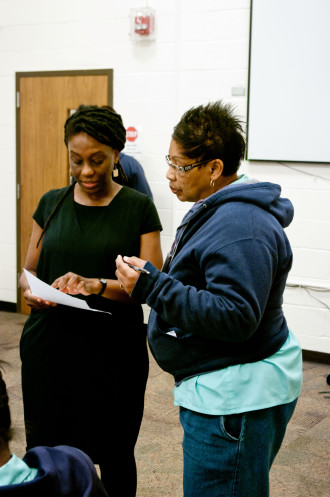
By taking the class out of a traditional university setting, she adds, students from both sides of the bars are given the chance to redefine how they think and communicate with each other. “It creates an equity in learning,” she notes. “They’re not only learning how to write creatively; they’re learning skills for discussion and thinking, which are cross-disciplinary.”
Two sides of the coin
Many students in the program echo Bacote’s sentiment. Anna Keeva, a senior majoring in sociology and anthropology at Warren Wilson, says she’s decided to base her thesis on women’s issues, especially motherhood, in prison.
“I was definitely nervous about it [at first], because it was going to be a totally different environment than I was used to,” Keeva says. “People both semesters have been so open to conversation, so welcoming and excited to get to know the Wilson students. It’s been so easy to build a really good sort of family feeling in the classroom.”
Keeva says getting to know classmates from SCCW has made her more conscious of issues within the penal system and influenced how she views her own life.
“It’s really cool getting perspectives and ideas about things that are so different from anyone else that I talk to, or the way I understand the world,” she says. “From now on, whenever I think about people in prison, the images in my head will be the people I’ve gotten to know in my classes, which definitely humanizes incarcerated people a lot.”
Sandra Etters, who has taken several college courses through various programs within the North Carolina prison system since being incarcerated 16 years ago, says that WWC’s Inside-Out program is the first time she’s felt she was treated like a student first, instead of just a prisoner, and held to the same academic standards as outside students.
“This gives me an opportunity to know what to expect in college classes,” says Etters, who plans to attend Warren Wilson to complete a degree in social work after her release. “Prison has given me a wide education into people’s needs and struggles, and social work is something I can do with my life to help others.”
Beyond the academic benefits afforded through Inside-Out, Etters says the chance to interact with students and professors from the outside is invaluable to her as a long-term inmate.
“I’ve missed a lot of what’s happened in the outside world since being incarcerated,” she says. “These classes help us adjust socially and become more confident in our abilities. It’s an opportunity to see how education and the world work now, have real conversations and commingle with people in a way I haven’t had in years.”
Inmate Khrista Smith says the creative writing course has given her a “platform to heal.”
“I’m a singer-songwriter on the outside, and this helps to get it all out and speak about things important to me,” Smith explains.
Being in a classroom setting also helps transport her away from the reality of prison life, where she’s lived for the past four years. “I’m not in here when I’m in class,” says Smith, who is scheduled to be released in December. “Prison should be about reformation, and this allows us to do that.”
Work with what you got
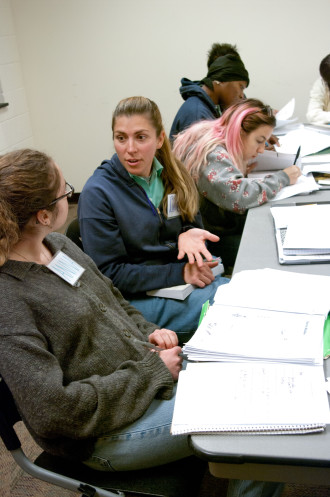
While the potential to transform lives through the program is real for students on both sides of the bars, it’s not all easy sledding, especially for incarcerated students who lack access to resources most traditional students take for granted.
“Incarcerated students have an added set of challenges,” Wilson acknowledges. “They have access to the faculty member for three hours a week during class time, but if they have questions outside of class, they can’t drop by their office or send an email.”
Another issue, says SCCW’s Phillips, is the lack of computer access for online research. “It is not available to offenders as it would be to traditional students, which tends to put them at a disadvantage, with the internet being such an important part of modern education practice.”
The N.C. Department of Safety is currently discussing ways to balance security concerns with allowing limited access to electronic resources through restricted servers, which SCCW has done at times in the past, says Phillips. “Those of us here at SCCW make every effort to accommodate education programs by providing effective solutions to problems endemic to incarceration while balancing the need for public security.”
For the time being, professors must plan their curriculum accordingly, notes Bacote. “We work with Mr. Phillips around accessing materials,” she says, which includes providing USB flash drives to students for storing their work. In addition, Wilson, Vesely-Flad and student volunteers spend several hours a week at the prison tutoring those who need extra help or attention.
Aside from the academic demands, getting used to the social dynamics of a classroom setting presents its own challenges, notes Etters. “Groups can be hard for me,” she says. “The classes have helped me adjust socially and become more confident in my abilities.”
Shine a light
Warren Wilson is currently accepting applications for next semester’s Inside-Out courses, which include an introductory religions class and an education class focused on children’s literacy. While faculty and administrators hope to expand the program in the future, the focus currently is on building a strong foundation for growth, says Wilson.
“This is our first of a number of semesters offering credit-bearing courses, and we need to do it well,” she says. Long-term, she would like to explore ways to support incarcerated students once they leave the correctional center. “We don’t have the capacity to support people after prison; however, we can be intentional now in supporting students to link their coursework to future study and jobs, and in developing strategies to deal with setbacks and challenges.”
Etters says she plans to take both spring semester courses and will continue to work with younger inmates to encourage them to take advantage of the program. “There are some very smart people in prison,” she says, “but no one’s told them they can do it. This program, the professors and fellow students give them a leg up when it comes to being released.”
In the meantime, one way community members can assist in the program’s success is by providing financial support, school supplies or by lending their time as a tutor, says Vesely-Flad. Currently, the program is looking for a donation of 16 dictionaries and 16 thesauruses for students on the inside. Warren Wilson donors can earmark contributions specifically for Inside-Out.
![HELPING THE CAGED BIRD SING: "[T]his helps to get it all out and speak about things important to me," says student Khrista Smith, above, of her participation in the Inside-Out program. "Prison should be about reformation, and this allows us to do that.” Photo by Cindy Kunst](http://mountainx.com/wp-content/uploads/2017/11/CLKS7763-330x497.jpg)
“The majority of our offender population will return to our communities, and in offering them opportunities to re-enter society in a positive way, this will benefit the very communities they return to,” he notes. “These kinds of programs provide a winning formula, and as someone who has seen actual lives changed by them, it is easy to put in the effort to support them.”
The experiences afforded by Inside-Out also shed light on the systemic issues that face Americans, free or imprisoned, and helps the next generation of leaders understand the complex nature of the society we live in and how to change it, says Vesely-Flad.
“Prisons are hidden places — it’s hard to get into them; you have to have a reason,” she says. “I think it’s important that we find our way in, that we really take charge of that process, and not let barbed wire continue to separate us.”

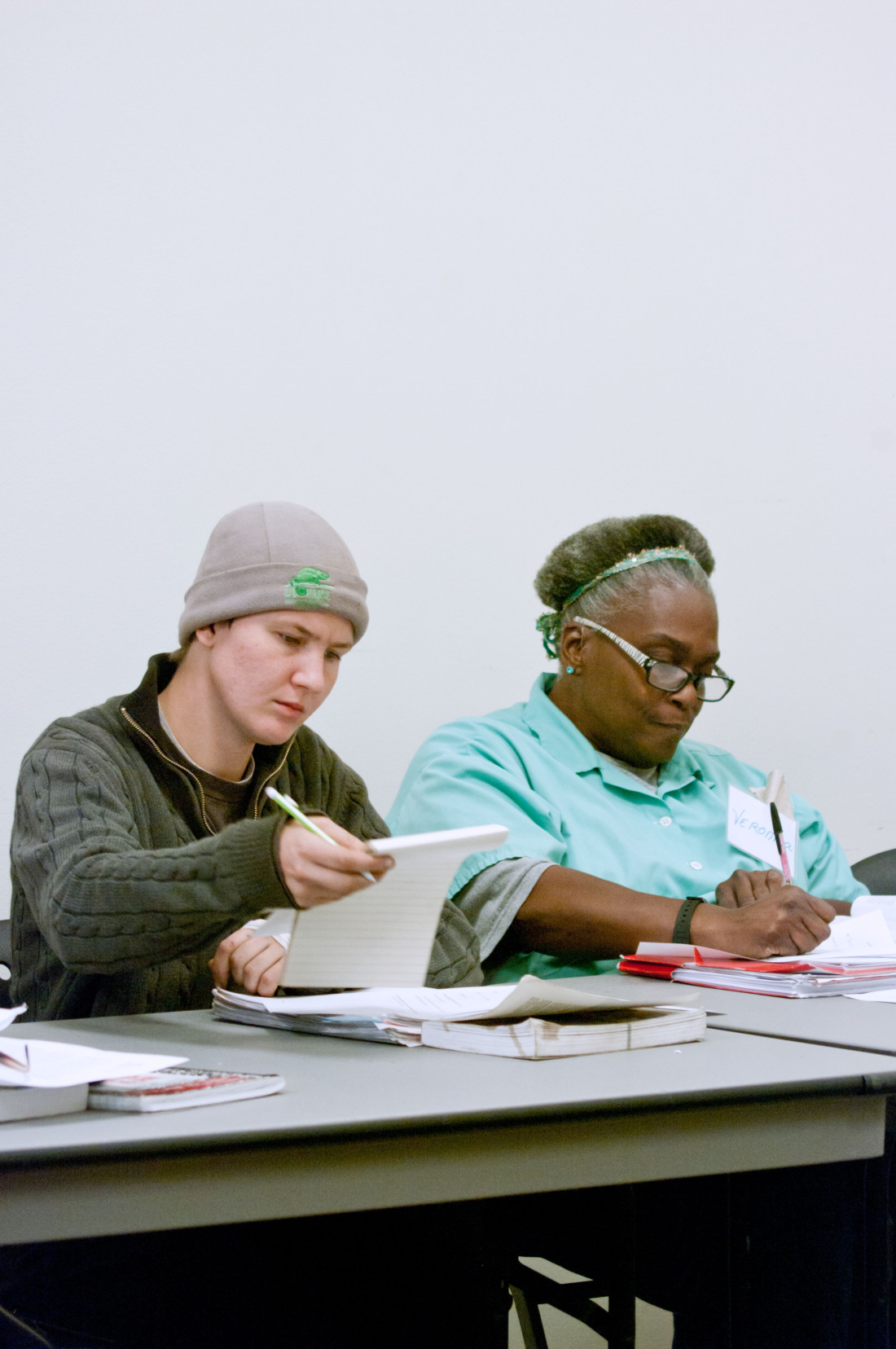


Before you comment
The comments section is here to provide a platform for civil dialogue on the issues we face together as a local community. Xpress is committed to offering this platform for all voices, but when the tone of the discussion gets nasty or strays off topic, we believe many people choose not to participate. Xpress editors are determined to moderate comments to ensure a constructive interchange is maintained. All comments judged not to be in keeping with the spirit of civil discourse will be removed and repeat violators will be banned. See here for our terms of service. Thank you for being part of this effort to promote respectful discussion.